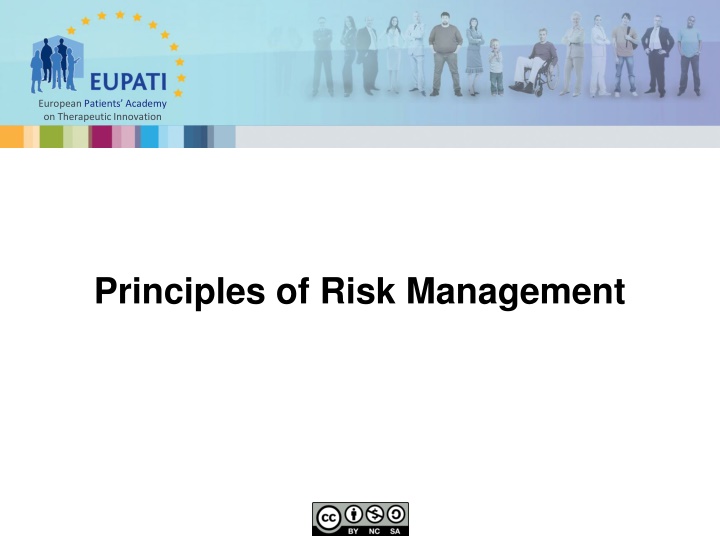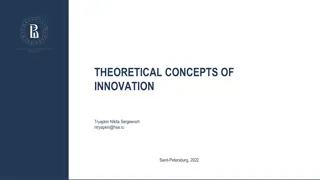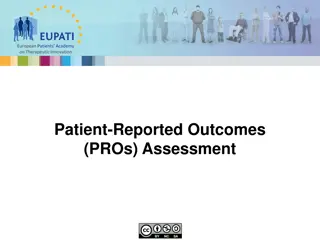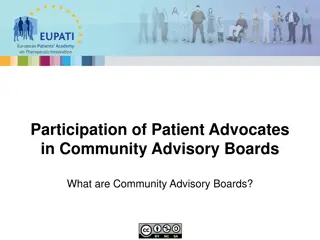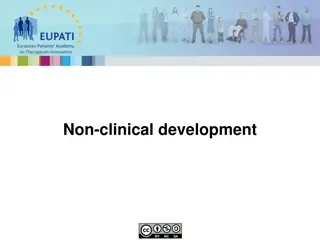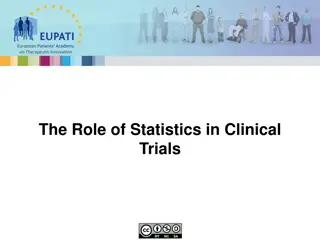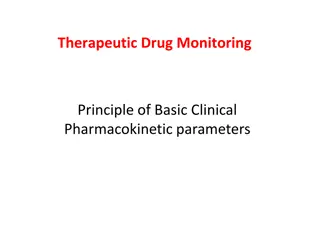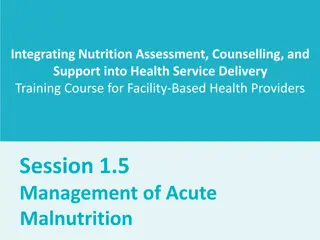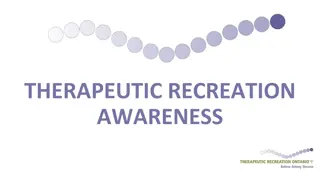Principles of Risk Management in Therapeutic Innovation
European Patients Academy emphasizes the importance of risk management in therapeutic innovation. Understanding the balance between benefits and risks, implementing risk management strategies for all medicines, and identifying different types of risks are crucial for ensuring patient safety and public health. The three pillars of risk management include compiling safety profiles, developing a risk assessment plan, and implementing a risk management plan to minimize risks effectively.
Download Presentation

Please find below an Image/Link to download the presentation.
The content on the website is provided AS IS for your information and personal use only. It may not be sold, licensed, or shared on other websites without obtaining consent from the author.If you encounter any issues during the download, it is possible that the publisher has removed the file from their server.
You are allowed to download the files provided on this website for personal or commercial use, subject to the condition that they are used lawfully. All files are the property of their respective owners.
The content on the website is provided AS IS for your information and personal use only. It may not be sold, licensed, or shared on other websites without obtaining consent from the author.
E N D
Presentation Transcript
European Patients Academy on Therapeutic Innovation Principles of Risk Management
Benefit-risk Balance European Patients Academy on Therapeutic Innovation No medicine is without risk and the benefits of a medicine must always be weighed up against its risks. The balance of benefits and risks should be effectively considered and must not be left to chance. Failing to manage the risks may lead to crisis situations with harmful consequences for patient safety and public health. Risk management is the process of measuring or assessing risk and developing strategies to manage it. 2
Why do we need a risk management strategy for all medicines? European Patients Academy on Therapeutic Innovation The objective of a risk management strategy is to ensure that the balance of benefits and risks of a medicine remains positive over the time when it is used in real world settings. Randomised controlled trials rarely represent real-life experience accurately. Health authorities have increasingly adopted new regulations mandating companies to proactively manage the risk for all their medicines. 3
Types of Risk European Patients Academy on Therapeutic Innovation Identified risk There is adequate evidence of an association between the medicine and the risk occurrence. Potential risk There is some basis for suspicion of an association between the medicine and the risk occurrence, but it is not confirmed. Missing information There is insufficient or no data. Usually additional data or evidence must be collected, using a risk management plan. 4
Types of Risk European Patients Academy on Therapeutic Innovation Signal detection This is information arising from one or more sources, which suggests: A new, potentially causal relationship between an intervention and an event, or A new aspect of a known association between an intervention and an event (or set of related events). The association may either be adverse or beneficial, and is judged to be likely enough to justify verification. 5
Risk Management is based on three pillars European Patients Academy on Therapeutic Innovation 1. Safety profiles All risks (identified or potential) are compiled, along with a record of what is missing in terms of safety information. 2. Risk assessment or pharmacovigilance plan This is the plan for further identifying, characterising, and assessing risks. It contains both routine and additional pharmacovigilance activities. 3. Risk Management Plan (RMP) This is the plan for minimising the risk. It contains both routine and additional risk minimisation activities. 6
European Regulations European Patients Academy on Therapeutic Innovation Pharmacovigilance legislation is evolving continuously. Risk management planning and related activities may differ from one country or region to another. The ultimate goal of any RMP is the same, to ensure patient safety. An RMP or an update to an existing RMP, can be submitted at any time during a product s life-cycle during both pre- and post-authorisation of a medicine. 7
Medicines under additional monitoring European Patients Academy on Therapeutic Innovation As part of the pharmacovigilance legislation, the EU maintains a process which stipulates that all medicines that are subject to additional monitoring must carry a black inverted triangle . This black inverted triangle is applied to a medicine to indicate that it is under additional monitoring, usually for a five year period. It s purpose is to alert and encourage patients and doctors to report any suspected side effects through their respective national reporting systems, this is so any new emerging information can be analysed efficiently. 8
Additional Monitoring European Patients Academy on Therapeutic Innovation This reporting is essential and complementary to all other pharmacovigilance activities to better understand the risks and safety profile of a new medicine in a real- life setting. Other medicines can also be placed under additional monitoring, based on a decision by the EMA s Pharmacovigilance Risk Assessment Committee (PRAC). Data from this reporting will be analysed as part of the continuous assessment of the benefit-risk balance of each medicine during its life-cycle. 9
Benefits of Risk Management European Patients Academy on Therapeutic Innovation Risk management is increasingly considered necessary to enhance the benefit-risk balance in real-life. Risk minimisation activities should be proportionate to the risks and should not prevent the use of medicine in appropriately selected patients. Risk management can be challenging and expensive, but is necessary and ultimately rewarding and reassuring. It allows trust to be built between companies and stakeholders promoting transparency. 10
European Patients Academy on Therapeutic Innovation Risk management is increasingly becoming a cornerstone for sustainable market availability of complex medicines, for example, advanced-therapy medicines. Risk management is an opportunity to: protect patients, avoid crisis, and enhance the knowledge about the products. 11
References European Patients Academy on Therapeutic Innovation European Commission (2008). Volume 9A of the rules governing medicines in the European Union Guidelines on pharmacovigilance for medicines for human use. Retrieved 1st September 2015 from http://ec.europa.eu/health/files/eudralex/vol- 9/pdf/vol9a_09-2008_en.pdf European Medicines Administration (2014). Guideline on good pharmacovigilance practices (GVP) Module V Risk management systems (Rev 1). Retrieved 1st September 2015 from http://www.ema.europa.eu/docs/en_GB/document_librar y/Scientific_guideline/2012/06/WC500129134.pdf 12
References European Patients Academy on Therapeutic Innovation European Parliament (2012). Regulation (EU) No 1027/2012 amending Regulation (EC) No 726/2004 as regards pharmacovigilance. Retrieved 1st September 2015 from http://ec.europa.eu/health/files/eudralex/vol- 1/reg_2012_1027/reg_2012_1027_en.pdf European Parliament (2012). Directive 2012/26/EU amending Directive 2001/83/EC as regards pharmacovigilance. Retrieved 1st September 2015 from http://ec.europa.eu/health/files/eudralex/vol- 1/dir_2012_26/dir_2012_26_en.pdf 13
